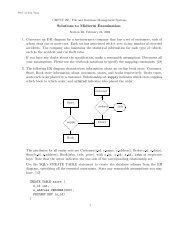CMPUT 429 / CMPE 382 Mid-Term
CMPUT 429 / CMPE 382 Mid-Term
CMPUT 429 / CMPE 382 Mid-Term
- No tags were found...
Create successful ePaper yourself
Turn your PDF publications into a flip-book with our unique Google optimized e-Paper software.
Zero4MUXReg APCAddrInstrOutInstructionMemoryReg BOut AOut BReg IInRegister FileSign ExtendMUXAddrDataOutData InDataMemoryMUXZero4MUXReg APCAddrInstrOutInstructionMemoryReg BOut AOut BReg IInRegister FileSign ExtendMUXAddrDataOutData InDataMemoryMUX
Zero4MUXReg APCAddrInstrOutInstructionMemoryReg BOut AOut BReg IInRegister FileSign ExtendMUXAddrDataOutData InDataMemoryMUXZero4MUXReg APCAddrInstrOutInstructionMemoryReg BOut AOut BReg IInRegister FileSign ExtendMUXAddrDataOutData InDataMemoryMUX5. List all the dependencies (RAW, WAR, WAW) in the following fragment, and indicate whether they areloop-carried or not. (20 marks)for (j = 1; j < 100; j-- ) {}a[j] = b[j] + b[j+1]; /* S1 */b[j] = a[j-1] – c[j+1]; /* S2 */
Section 3. Design problem (10 marks per part)You have an existing design, thoughtfully called Machine A, with a 5 stage pipeline running at 500 MHz.You are considering a new machine - Machine B – which will have a 7 stage pipeline running at 550 MHz.Both machines will have the same instruction set architecture but more effort can be expended on thecompiler for machine A simply because it has been in production longer. As a result, there will be fewerstalls on Machine A. Code for both A and B has the same frequency of branches, at 20%. They have thesame frequency of loads and stores: 30% loads and 10% stores. The branch delay slot on machine A can befilled 85% of the time, while on B it is only filled 80% of the time. The load delay slot on both machinescan be filled 90% of the time.a) Assuming that the pipe stages have been evenly balanced in Machine A, what is the best clock rate youwould expect for Machine B, neglecting pipelining overhead ?b) Assume that, neglecting the effect of stalls, all instructions have a CPI of 1.0. Including the effects ofstalls for branches and loads, what is the effective CPI of Machine A? Machine B?c) What is the MIPS rating for Machine A? Machine B? Is this a useful value to use when comparing thesemachines? Why or why not?d) What is the comparative running time for a program on these two machines? Should you invest the effortrequired to build Machine B? Why or why not?e) How fast could Machine A be made, in MIPS, just by improving the compiler’s ability to fill branchdelay slots?





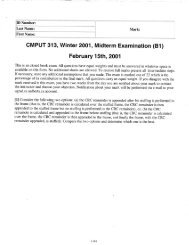
![CMPUT 313 Final Exam [Harms] April 26, 2000 g L (Ilosed Book](https://img.yumpu.com/45617471/1/190x245/cmput-313-final-exam-harms-april-26-2000-g-l-ilosed-book.jpg?quality=85)
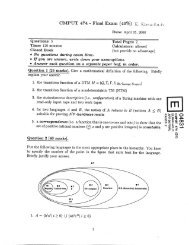
![CMPUT 379 Midterm Exam [Harms]](https://img.yumpu.com/44750568/1/190x245/cmput-379-midterm-exam-harms.jpg?quality=85)



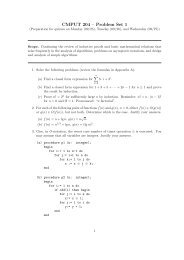

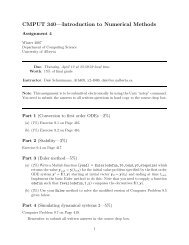
![CMPUT 272 Midterm [B2 -- Harms]](https://img.yumpu.com/36401258/1/190x245/cmput-272-midterm-b2-harms.jpg?quality=85)
